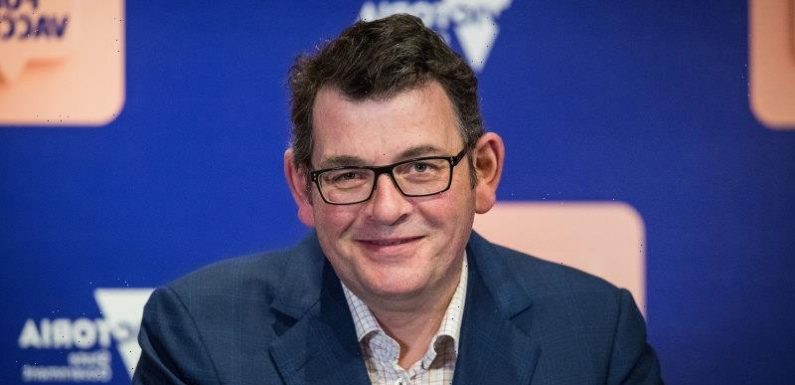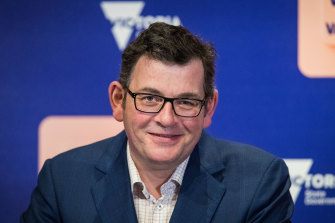
For our free coronavirus pandemic coverage, learn more here.
Until last week, the job of Premier Daniel Andrews was relatively straightforward: aim for zero COVID cases then open up as normal. That strategy – restrictions and lockdowns – worked five times before.
But on Wednesday, Mr Andrews accepted that this lockdown, our sixth, will not be able to prevent the spread of the Delta variant.
Victorian Premier Daniel Andrews at a press conference in Melbourne on Friday.Credit:Darrian Traynor
“We were aiming to drive it down and have cases falling,” he said. “It is now the advice of the experts that that is not possible.”
And with that, the Premier’s job became not about eradication, but solving the far more complicated puzzle that will be living with COVID.
What “freedoms” might be granted and when. What ongoing restrictions might remain indefinitely. Critically, as Mr Andrews suggested on Friday, it also brings our hospitals sharply into focus: particularly whether they will be able to cope with the pressure the likely surge in COVID cases will cause.
Ahead of national cabinet discussion on Friday night about hospital capacity, Federal Health Minister Greg Hunt said the government had “confidence in all of the states and territories’ preparedness”.
Be that as it may, the signs are ominous. On Thursday the president of the Australian Medical Association, Dr Omar Khorshid, suggested that “our hospitals are not starting from a position of strength. Far from it”.
An Age analysis of hospital performance data reported on Saturday found that virtually every part of Victoria’s system is deteriorating, from ambulance response times and access to mental health beds to the number of hospital patients who need urgent treatment: in June last year there were 1875 patients categorised as “urgent” on the waiting list; a year later there were 2333.
Australian Medical Association state president Roderick McRae told us that Victoria’s healthcare system had been in “dire straits” long before the pandemic hit.
The threats are threefold: that the system will be flooded with COVID cases if they continue to increase at the present rate; that those cases will squeeze out non-COVID patients; and that hospital capacity will be reduced by staff infections and isolation. Both Royal Melbourne and The Alfred in recent weeks had to furlough staff because of positive cases.
Dr Khorshid told the ABC he believed Victoria is equipped to care for COVID patients but was concerned other emergency cases would be affected. “We are worried about Australians who get heart attacks, who need surgery, who are going to miss out on care.”
There is no doubt our six lockdowns have saved lives, both directly through minimising exposure to COVID – last year’s nursing home debacle notwithstanding – and indirectly by preventing our hospitals from being overrun.
As we reach vaccination targets, though, the government will have to manage the pandemic in a more sophisticated manner.
It will no longer be able to rely on the single, crude tool of lockdown and must instead balance “freedoms” and privileges for the fully vaccinated – as Mr Andrews indicated on Friday – against protecting those who are yet to be immunised, while ensuring our health system is not overwhelmed by the likely ongoing stream of cases.
In NSW the race is now between vaccination – 70 per cent have had at least one dose – and the appalling case numbers, with a record 1553 on Saturday. “Success,” Deborah Snow and Lucy Carroll reported, “hangs on how big the surge of critically ill will get as the virus infiltrates the ranks of the unvaccinated.”
Premier Gladys Berejiklian has promised to release modelling next week on how the NSW hospital system is expected to cope.
We urge Daniel Andrews to do the same for Victoria. We are all desperate for lockdown to end. But we must be satisfied that we will not botch our escape, that our hospitals will cope with the “new normal”. And, right now, there are worrying signs that they will not.
The Morning Edition newsletter is our guide to the day’s most important and interesting stories, analysis and insights. Sign up here.
Most Viewed in National
From our partners
Source: Read Full Article
